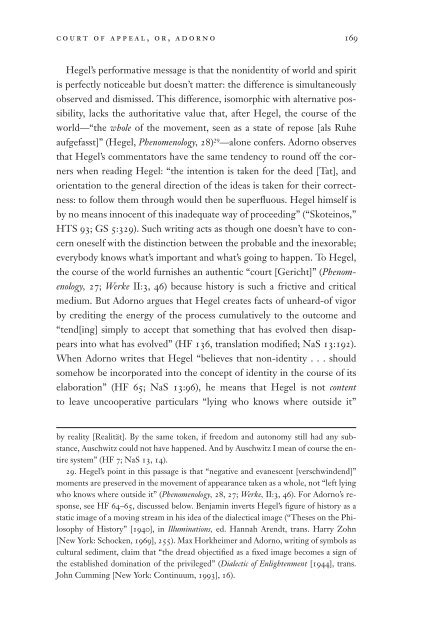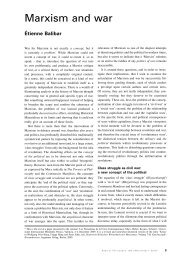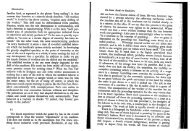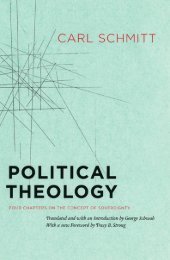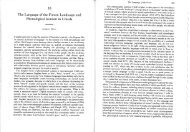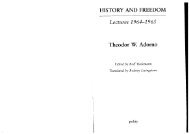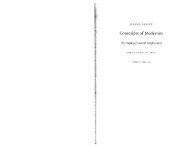Terada - Looking Away (Selections).pdf - Townsend Humanities Lab
Terada - Looking Away (Selections).pdf - Townsend Humanities Lab
Terada - Looking Away (Selections).pdf - Townsend Humanities Lab
You also want an ePaper? Increase the reach of your titles
YUMPU automatically turns print PDFs into web optimized ePapers that Google loves.
court of appeal, or, adorno 169<br />
Hegel’s performative message is that the nonidentity of world and spirit<br />
is perfectly noticeable but doesn’t matter: the difference is simultaneously<br />
observed and dismissed. This difference, isomorphic with alternative possibility,<br />
lacks the authoritative value that, after Hegel, the course of the<br />
world—“the whole of the movement, seen as a state of repose [als Ruhe<br />
aufgefasst]” (Hegel, Phenomenology, 28) 29 —alone confers. Adorno observes<br />
that Hegel’s commentators have the same tendency to round off the corners<br />
when reading Hegel: “the intention is taken for the deed [Tat], and<br />
orientation to the general direction of the ideas is taken for their correctness:<br />
to follow them through would then be superfluous. Hegel himself is<br />
by no means innocent of this inadequate way of proceeding” (“Skoteinos,”<br />
HTS 93; GS 5:329). Such writing acts as though one doesn’t have to concern<br />
oneself with the distinction between the probable and the inexorable;<br />
everybody knows what’s important and what’s going to happen. To Hegel,<br />
the course of the world furnishes an authentic “court [Gericht]” (Phenomenology,<br />
27; Werke II:3, 46) because history is such a frictive and critical<br />
medium. But Adorno argues that Hegel creates facts of unheard-of vigor<br />
by crediting the energy of the process cumulatively to the outcome and<br />
“tend[ing] simply to accept that something that has evolved then disappears<br />
into what has evolved” (HF 136, translation modified; NaS 13:192).<br />
When Adorno writes that Hegel “believes that non-identity ...should<br />
somehow be incorporated into the concept of identity in the course of its<br />
elaboration” (HF 65; NaS 13:96), he means that Hegel is not content<br />
to leave uncooperative particulars “lying who knows where outside it”<br />
by reality [Realität]. By the same token, if freedom and autonomy still had any substance,<br />
Auschwitz could not have happened. And by Auschwitz I mean of course the entire<br />
system” (HF 7; NaS 13, 14).<br />
29. Hegel’s point in this passage is that “negative and evanescent [verschwindend]”<br />
moments are preserved in the movement of appearance taken as a whole, not “left lying<br />
who knows where outside it” (Phenomenology, 28, 27; Werke, II:3, 46). For Adorno’s response,<br />
see HF 64–65, discussed below. Benjamin inverts Hegel’s figure of history as a<br />
static image of a moving stream in his idea of the dialectical image (“Theses on the Philosophy<br />
of History” [1940], in Illuminations, ed. Hannah Arendt, trans. Harry Zohn<br />
[New York: Schocken, 1969], 255). Max Horkheimer and Adorno, writing of symbols as<br />
cultural sediment, claim that “the dread objectified as a fixed image becomes a sign of<br />
the established domination of the privileged” (Dialectic of Enlightenment [1944], trans.<br />
John Cumming [New York: Continuum, 1993], 16).


